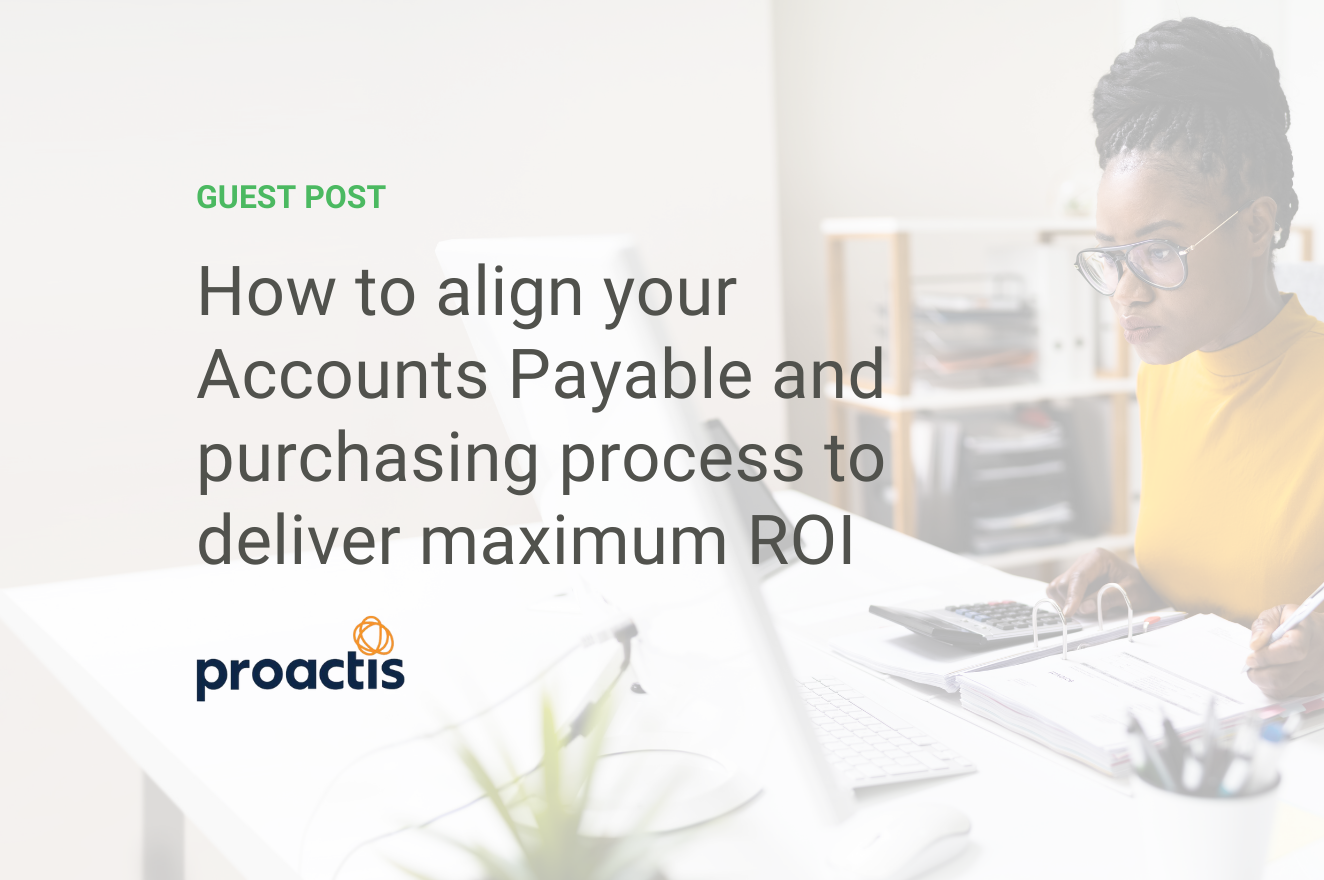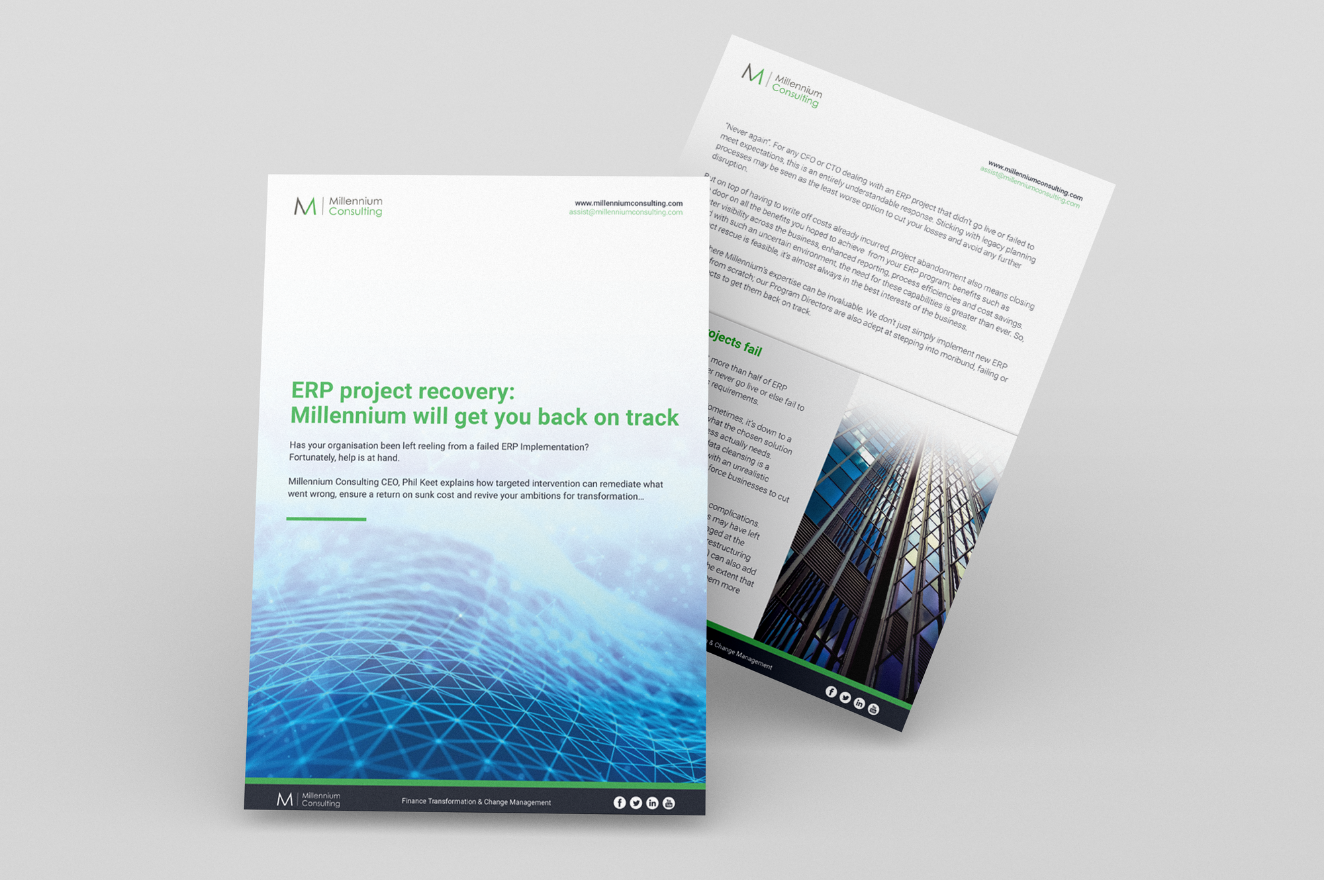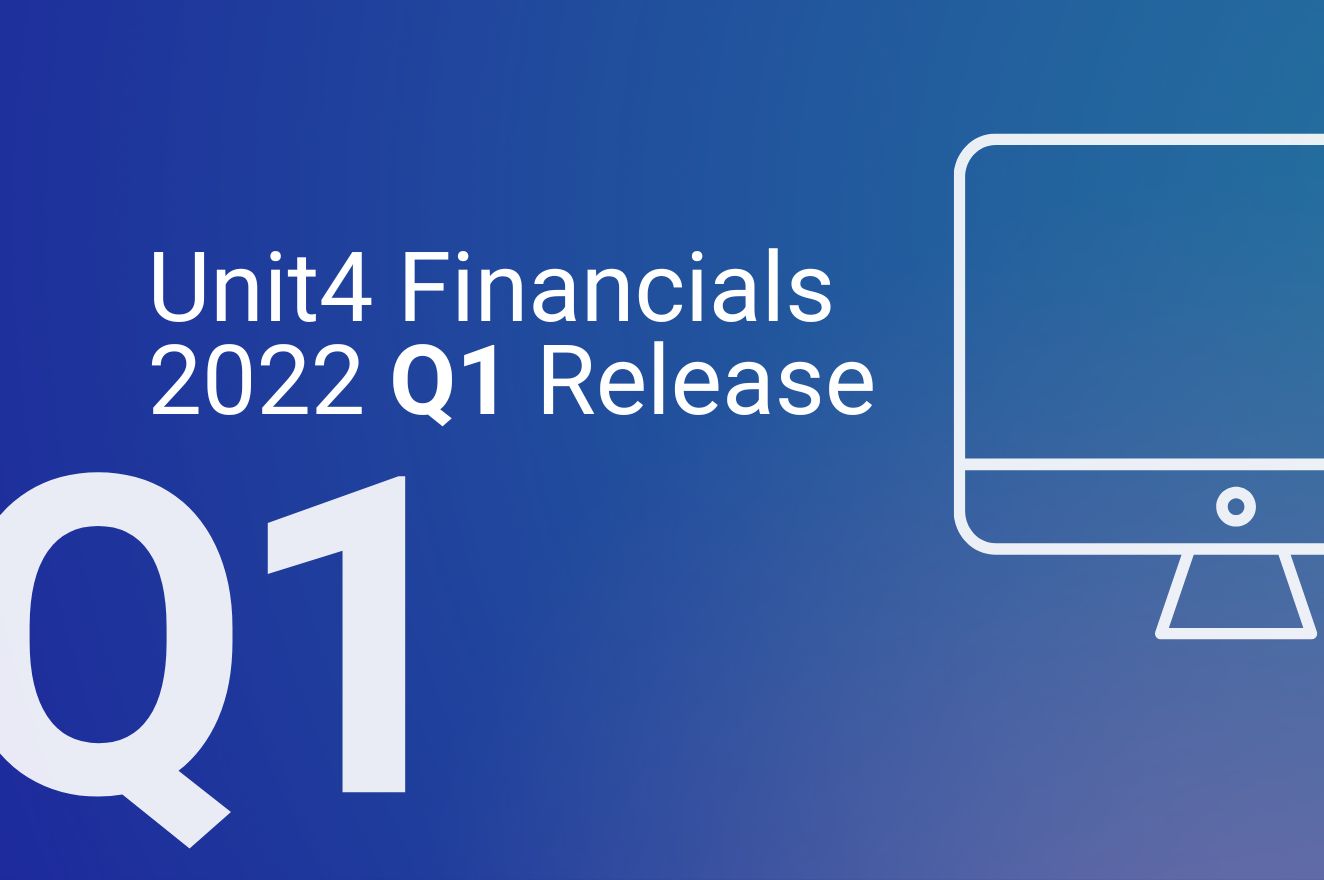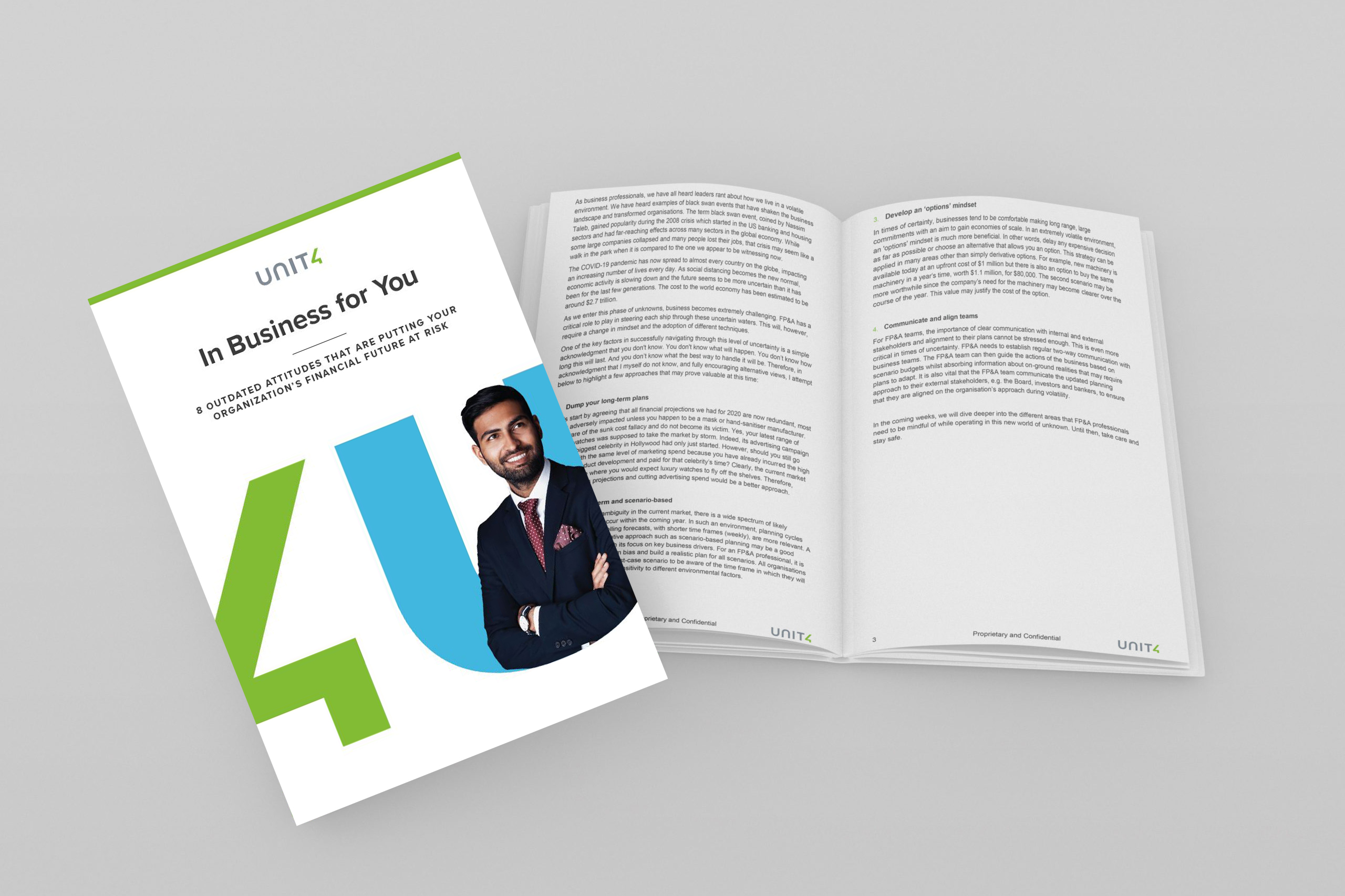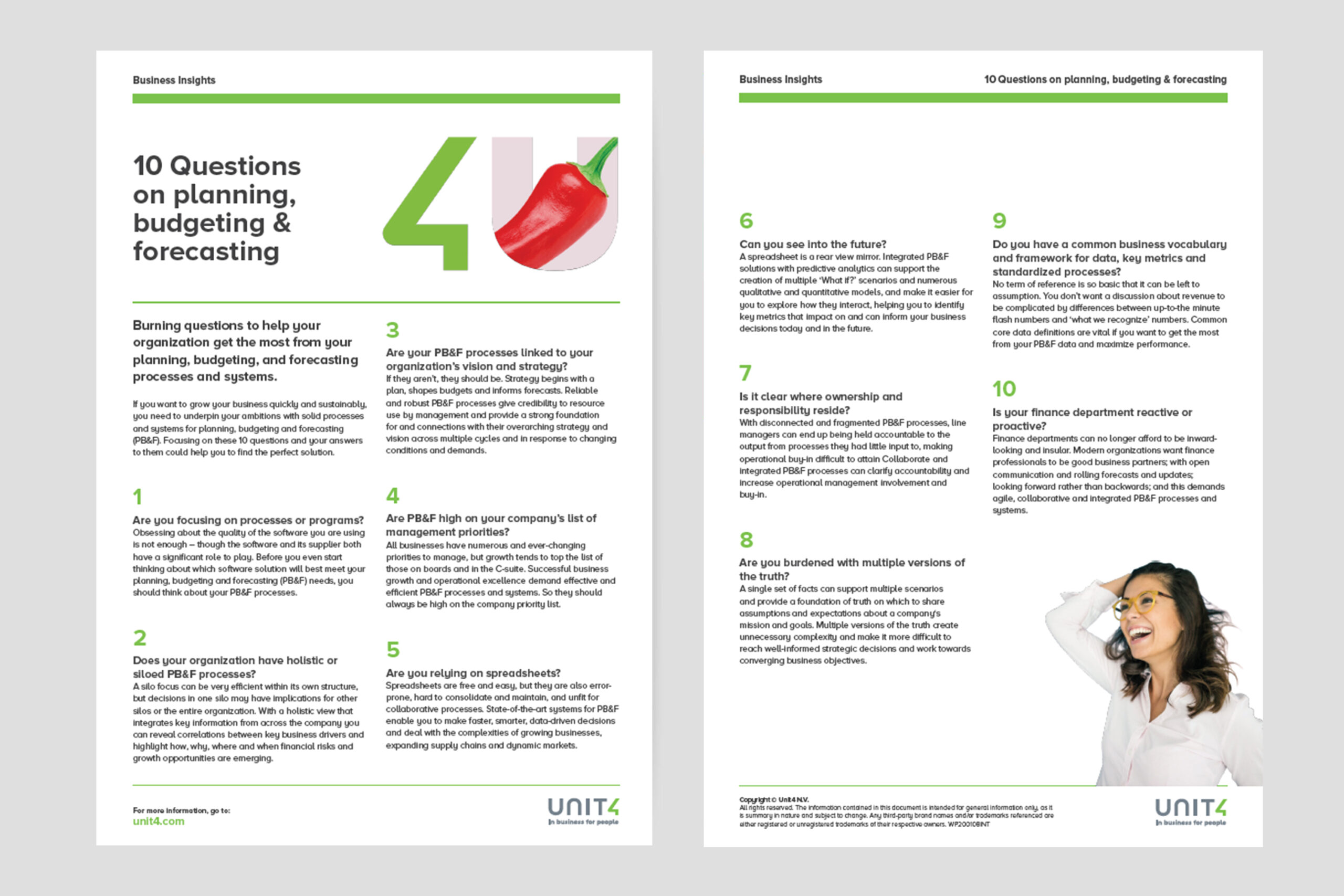How to align your Accounts Payable and purchasing process to deliver maximum ROI
May 2022
Guest post from Millennium Consulting Partner, Proactis
(Author: Mark Watson)
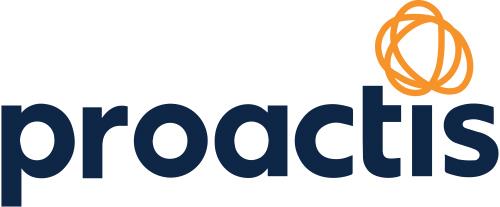
We live in competitive, and often volatile times. So, aligning your purchasing and accounts payable (AP) processes is a crucial step towards efficiency and agility – without which, your organisation could be exposed to increased risk, a lack of control, reduced productivity and an operating model which is wasting money, rather than saving it.
Over the last few months, I’ve had some very interesting discussions with senior Finance and Procurement leaders who are reaping the rewards and demonstrating a clear ROI by successfully aligning these two processes as part of their digital evolution. Although many organisations have already started on the journey, most are not yet achieving the full benefits possible, because their processes aren’t aligned. So, they remain exposed to maverick buying, extended and inefficient purchasing timescales, duplicate invoices, late payments and a general lack of true spend visibility.
With these thoughts in mind, I want to share 3 steps that could help you begin to align your purchasing and AP processes to deliver maximum ROI for your business strategy:
To truly align your purchasing and AP processes, you first need to understand how these processes are currently performing. This will not only highlight what you’re doing well, but also where improvements can be made. Once you’ve understood your current processes and how they’re working, you should look at whether they’re meeting your current KPIs and whether they’re driving tangible business outcomes. If you haven’t already set KPIs, they are invaluable in helping you establish what your performance looks like vs industry benchmarks or industry peers. They are also critical in supporting the creation of a business case based on what needs to change, promoting stakeholder collaboration and accountability and, if appropriate, helping you identify the right technology partner to deliver an ROI against them. Once you’ve completed these steps, you’ll have a better idea of:
· The cost savings and process efficiencies that are achievable.
· An understanding of the cost to your organisation of ongoing sub-optimal performance – the “cost of doing nothing”.
· A clear statement of the business outcomes that you want to achieve.
· A supporting business case which justifies any request for investment to deliver the change required.
Understanding your processes is crucial for your evolution, so look at what you do now, and work out what you can do better. This is where choosing the right technology partner is vital.
Once you have performed a methodical and complete review of your current processes, you should consider the technology you are using to manage these processes – is it suitable? Are there gaps? Do those gaps cost you money, or make you inefficient? Can you see what you need to confidently to manage your business, or do you have to guess/make assumptions? The technology, and the vendor supplying it, should be the bedrock of all your processes, and as a result, must be aligned with your business objectives and able to provide you with all the tools you need to drive maximum ROI. Sadly, I still hear of vendors supplying technology that do not:
· Assess customer needs correctly.
· Understand business objectives and KPIs.
· Understand the importance that people place in the process.
· Care for the vision of the customer and their journey.
The right solution provider should help you lay the foundations for success from the outset, and beyond. You need a partner that will work with you along the way. One that will have you up and running within an agreed time frame and help you to continuously improve and monitor progress against your current objectives and KPIs. On top of this, any software must integrate seamlessly into your existing Unit4 Financials system. This is the only way of ensuring maximum ROI, control, and limited disruption. Best-of-breed providers, or software partners, such as Proactis can help you do this.
As part of your digital evolution, a simple, but effective policy that I often come across is employing a “No PO, No Pay” policy. Proactis has several customers that use this to help align and support processes. Such a policy means that if an invoice arrives at the AP department with no PO number associated with it, the invoice will automatically not be paid. The benefits of such a simple, but effective policy include:
· All spend being accounted for.
· Increased compliance.
· Reduced invoice error handling.
· Prompt payment of invoices.
· Peace of mind!
I find that some organisations are still struggling to implement this. And this is because, for such a policy to succeed, you need to understand that implementing such a policy is a journey. “No PO, No Pay” is not a magic wand that will fix everything in one go, but with the right mindset, technology, technology partner and understanding of your current processes, it can deliver value.
Summary
To summarise, the 3 steps above are things you can do to successfully understand and align your purchasing and accounts payable (AP) processes, and in doing so, deliver increased efficiency and agility to your organisation, as well as a healthy ROI. I’d be very interested to learn where you are in your process automation journey, and how Proactis can help you achieve your goals.
About Proactis
Proactis is a leading Source-to-Pay software solution provider for mid-market organisations across a range of service-led industries. To find more about Proactis’ purchasing and accounts payable solutions, please click here.
Introduction to Unit4 Financials Workflow
May 2022
Workflow elements were introduced to Unit4 Financials around a decade ago, at the same time as Procurement and Invoice Matching functions. However, it is worth noting, that the use of workflows is not solely limited to the above POP & PIM functionality.
You can use workflows to support:
• Purchase orders
• Procurement and purchase invoices
• Invoice matching
• Approving sales or invoices – both in the Billing module and in Financials
• Approving purchase invoices directly in Financials or through a third-party application
• Elements – e.g., approving suppliers, vendors, and projects
Workflow Overview
Within Workflow, there are three main components:
• Messaging
• Position hierarchies
• Element responsibilities
Here is a closer look at these elements:
This refers to the ability to send or schedule an email (and/or SMS text) to the relevant approver so that approval can be actioned.
This Messaging function element has been enhanced recently, with the useful addition of an ‘out of office’ within the application. If the respondent is away, the message can be automatically forwarded to another delegated user.
Position hierarchies are usually set up in the administration module and are made up of what are known as ‘positions’.
A position is an element of the hierarchy. You can have more than one user within each position. Normally, a position determines the monetary authorisation limit for all persons within that position.
So, for example, you might have three positions: £10k, £50k, and £100k, with multiple employees, included in each position.
Whereas a position tells the system how much an employee can authorise, element hierarchies tell it what type of transaction they are authorised to approve.
As Unit4 Financials users are aware, an element determines a GL code, project, or department. On each user profile, you can set up an element responsibility and specify that the user is responsible for, e.g., the IT department or Marketing department.
So whatever document requiring approval arrives on the system – e.g., purchase order or invoice – this combination of ‘element responsibility’ and ‘position’ will effectively tell Financials to whom to direct it to.
Want to know more? Watch a Workflow demonstration
In this video, we demonstrate a purchase invoice going into Unit4 Financials and then through a workflow.
(Even if you do not have Procurement and Invoice Matching in place, we explain how it is possible to approve purchase invoices directly in Financials.)

Need further help?
For further tips and advice on optimising your approvals process, please do get in touch. Millennium Consulting’s Unit4 Financials experts are always happy to help.
Unit4 Financials v12 (Coda) and End-of-Life for Internet Explorer 11: Act Now…
May 2022
Internet Explorer will be retired by Microsoft in most Windows versions on 15 June 2022.
If you are using Internet Explorer with a legacy version of Unit4 Financials (e.g., v12 (Coda) or earlier), you will need to switch to the Edge browser and make some configuration changes in order to retain full functionality.
Retirement of Internet Explorer 11
On the retirement date of 15 June 2022, the IE11 Desktop application will be disabled permanently. From that date onward, if a user tries to access it, they will be redirected to Microsoft Edge.
In order to use applications with legacy IE11 dependencies (including Unit4 Financials v12), you can access legacy browser support in Microsoft Edge by switching to Internet Explorer mode.
In a recent blog post, Microsoft recommended that organisations schedule their own internal retirement date in advance of switch-off: “The best way to prepare for IE disablement after June 15 is to proactively retire IE in your organizations before June 15”.
Unit4 Financials legacy versions: how to enable full functionality in Edge
Within Unit4 Financials v12, failure to enable the Internet Explorer mode within Edge will mean that the drop-down menus and multiple tab functionality will be initially disabled.
Also, if you select another menu item, the Input screen will be closed and the newly selected page displayed. It will not open in a new tab.
To enable Internet Explorer mode within Edge, go into the Edge – Settings – Default Browser screen and set “Allow sites to be reloaded in Internet Explorer mode” = Allow. You can also add the page URL for your system to this screen manually.
The next time you attempt to access your Unit4 Financials system, you can select from the settings menu “Reload in Internet Explorer mode”.
The Unit4 Financials login box will now show in the center of the screen.
On completion of the logon credentials, the system will now show drop-down menus, multiple tabs and other features.
The next time you attempt to access your Unit4 Financials system, you can select from the settings menu to “Reload in Internet Explorer mode”.
The Unit4 Financials logon box will now show in the centre of the screen.
On completion of the logon credentials, the system will now show drop down menus, multiple tabs and other features.
Time to Upgrade?
Ready to future-proof your Unit4 Financials investment? As an Elite Unit4 Partner, Millennium Consulting specialises in delivering a seamless upgrade, while also ensuring your upgraded solution is fully aligned with organisational requirements.
To discuss your options for moving to Unit4 Financials Continuous Release, contact us today.
Why upgrade to Unit4 Financials Continuous Release?
May 2022
The new Continuous Release quarterly roll-out model for Unit4 Financials makes it easier than ever for CFOs to achieve maximum benefit from their financial management and accounting software. If you are yet to make the switch from Version 14 or earlier, here are three very good reasons to upgrade…
Unit4 has traditionally provided full support as standard for the latest two Financials releases. At present, Version 14 and Continuous Release are the two versions that get this support. By the end of 2022 however, Continuous Release will be the only version that is supported.
Upgrading to Continuous Release ensures continued access to Unit4’s “in support” maintenance and support package. The clear benefit of this is that it helps you avoid the myriad of risks that come with running outdated software, including security vulnerabilities, bugs, lost data, and a drop-off in productivity.
Interoperability is one of the biggest plus points of Unit 4Financials, including the potential to establish real-time integration with operational systems for a holistic view of the business. Upgrading to Continuous Release is the best way to ensure Financials continues to work seamlessly with other systems and applications you have in play.
Are you planning on moving your data platform to SQL Server 2019? Do you intend to switch from Data Explorer to Edge? To ensure compatibility, these are examples of applications where upgrading to Unit4 Financials Continuous Release is a technical requirement rather than just a recommendation.
The last – but by no means least – benefit of Continuous Release is the ability to access a steady stream of new features. These new additions tend to be very much user-driven; exactly the type of enhancements that make life easier for your team and help to boost productivity.
Here’s a closer look at some of the new functionality that has already arrived through the new roll-out model. (Note: we’ve focused here on the additional features you can access by upgrading directly from Version 14 to Continuous Release. If you are upgrading from earlier versions, there’s a whole host of additional functionality available to you).
Technical Infrastructure
The Unit4 Financials security settings enable you to restrict the read and write privileges of individual users. Continuous Release has introduced a handy new user warning alert linked to these restrictions.
For example, you have restricted a user from viewing the sales control account. When browsing, the user will not be able to view those account settings. They will, however, get a warning stating that access has been limited by the security settings. This prevents users from developing the false impression that they have been able to access the full picture, when in fact, certain items have been restricted.
Element Authorisation
Version 14 saw the introduction of the Element Authorisation feature. Now, through Continuous Release, if a new element is created using Assisted Element, when you use the ‘show work item’ function, it will use the element template masters to display the elements. In practical terms, it becomes a lot easier to identify precisely what element you are looking at.
Anonymise Change Log
Introduced in Continuous Release (and retrospectively fitted to Version 14 in release 4), the Anonymise Change Log function automatically removes personal identifiable information from any history and audit trail records to satisfy GDPR.
Items automatically removed include things like element name, short name, long name, tax and NI details, addresses and bank details. No log created with the Anonymise Change Log function is activated will include this information.
Provisional Year End
We now come to probably the most popular new feature since the introduction of Continuous Release.
Previously, running a year end was an all-or-nothing task; once you’d completed it, there was no going back. It often meant holding back on the job just in case the auditor needed to make final adjustments, increasing the likelihood of a last-minute rush.
The ability to run a Provisional Year End solves this problem.
The new function does more-or-less everything you would expect from a traditional year end. In other words, it sums all relevant profit and loss accounts and posts the net figure to retained earnings and the balance sheet. It will then post the closing balance sheet figures to period zero of the following year.
However, what the new function won’t do is close the year end being processed. In other words you can carry on posting to that year.
For example, your new year is 2022. You can still post to 2021 for the auditors, but all the information will now be in period zero. What’s more, if you are doing on-site reports, the figures will be correct, because all the carried forward balances will be in the period zero, and your retained earnings will be in the balance sheet as well.
Undo Year End
So, your accounts are finalised, and you’ve run your full year end. However, six months later, the auditors flag up an irregularity that calls for an adjustment. What are your options?
Thanks to the new Year End Undo function, you can now undo a year end after it has been closed. Having effectively unlocked it, you are then free to make any necessary adjustments to the year in question.
For a closer look at Provisional Year End and Year End Undo functions, and the benefits these will bring to your reporting procedures read our dedicated blog post here.
Enhancements to Browse Transactions
Introduced in earlier Unit4 Financials versions, the Browse Transactions function made it easier to drill into transaction data when creating reports through the use of metadata, selectors and presenters.
Under Continuous Release, Unit4 has been hard at work in bringing the Browse Transactions feature up to par with the Browse Details function. For instance, Browse Transactions now lets you restart, cancel and view the history of the workflow of a document. You can now copy a document from within Browse Transactions, You can also drill to account summary, edit buying comments in the related information panel, and raise corrective journals.
Company Master
Previously, the Unit4 Financials Company Master template only offered you a single default address for each company. But let’s say the address and point of contact for sending remittances is different to the address that needs to go on the purchase order.
The new master under Continuous Release now gives you a separate address category purely for sending purchase orders: a simple addition that can make life a lot easier on the procurement side.
Also, let’s say accounts have already been posted, but someone omitted to put in a balance code for a particular company. Financials now allows you to add or change the actual and turnover balance codes on Company Masters after documents have been posted.
Intercompany Control Accounts
In the Intercompany module, you can now have customer and supplier elements in the control accounts. In practical terms, this allows you to handle Intercompany at arm’s length, and also gives you the ability to send an invoice to another company within the same database.
Browse Details
Presenting information has become easier thanks to a couple of enhancements to the Browse Details feature. A new primary attachment presenter lets you view attachments instantly. When you are setting up a ‘browse details’ there is now a new vocab on the presenter that opens up with one click (in previous versions, it was slightly more difficult to locate!).
Pay
You can now change the payment period and/or date after a pay run has been generated. This ‘change payment period’ option is accessed via the pay collection actions menu and is controlled by functional security on the capability master.
Reconciliation
The Reconciliation function now records the date of reconciliation and the reconciliation user (i.e. the user who runs the reconciliation process). These two items – date and user – are also available as vocabs.
Copy Company with Finance
When you copy a company within the finance function, you can now copy the element flexi field data (although this only applies when copying within the same database, not when copying across databases).
Elements and template customisations can also now be copied when using ‘Copy Company’ to copy the eminent template masters.
Both of these elements were introduced through Continuous Release but have also been put into later updates of Version 14.
Fixed Assets
In Fixed Assets, you can now set a scheduled task to depreciate assets.
Invoice Matching
In Invoice Matching, it is now possible to input a non-matching invoice or credit note where the invoice total is different to the tax total.
Previously, when you ran LRN housekeeping, a journal would automatically be posted to finance. Of course, the presence of a GRN or LRN is usually indicative of an error somewhere. So having run LRN housekeeping and identified an LRN, you had to notify finance and cancel the document. You now have the option of not posting a journal when you run LRN housekeeping.
Procurement
Within Procurement, orders that are automatically created by a conversion from a requisition can be automatically submitted to workflow. So, you don’t have to go through that manual step of browsing and submitting to workflow.
Billing
If you have the Billing module, it is now possible to copy a document in ‘browse’, in the same way as with Finance documents.
CodaXL
CodaXL is now fully compatible with 64 bits, in addition to the 32-bit version.
Your next step
Ready to future-proof your Unit4 Financials investment? As an Elite Unit4 Partner, Millennium Consulting specialises in delivering a seamless upgrade, while also ensuring your upgraded solution is fully aligned with organisational requirements.
To discuss your options for moving to Unit4 Financials Continuous Release, contact us today.
Find out more
If you are still thinking about upgrading to Unit4 Financials Continuous Release to take advantage of the new functionality or to ensure you remain within the Unit4 supported software window, then watch our latest Spotlight video:
ERP project recovery
Millennium will get you backon track
May 2022
Has your organisation been left reeling from a failed ERP Implementation? Fortunately, help is at hand.
Millennium Consulting CEO, Phil Keet explains how targeted intervention can remediate what went wrong, ensure a return on sunk cost and revive your ambitions for transformation…
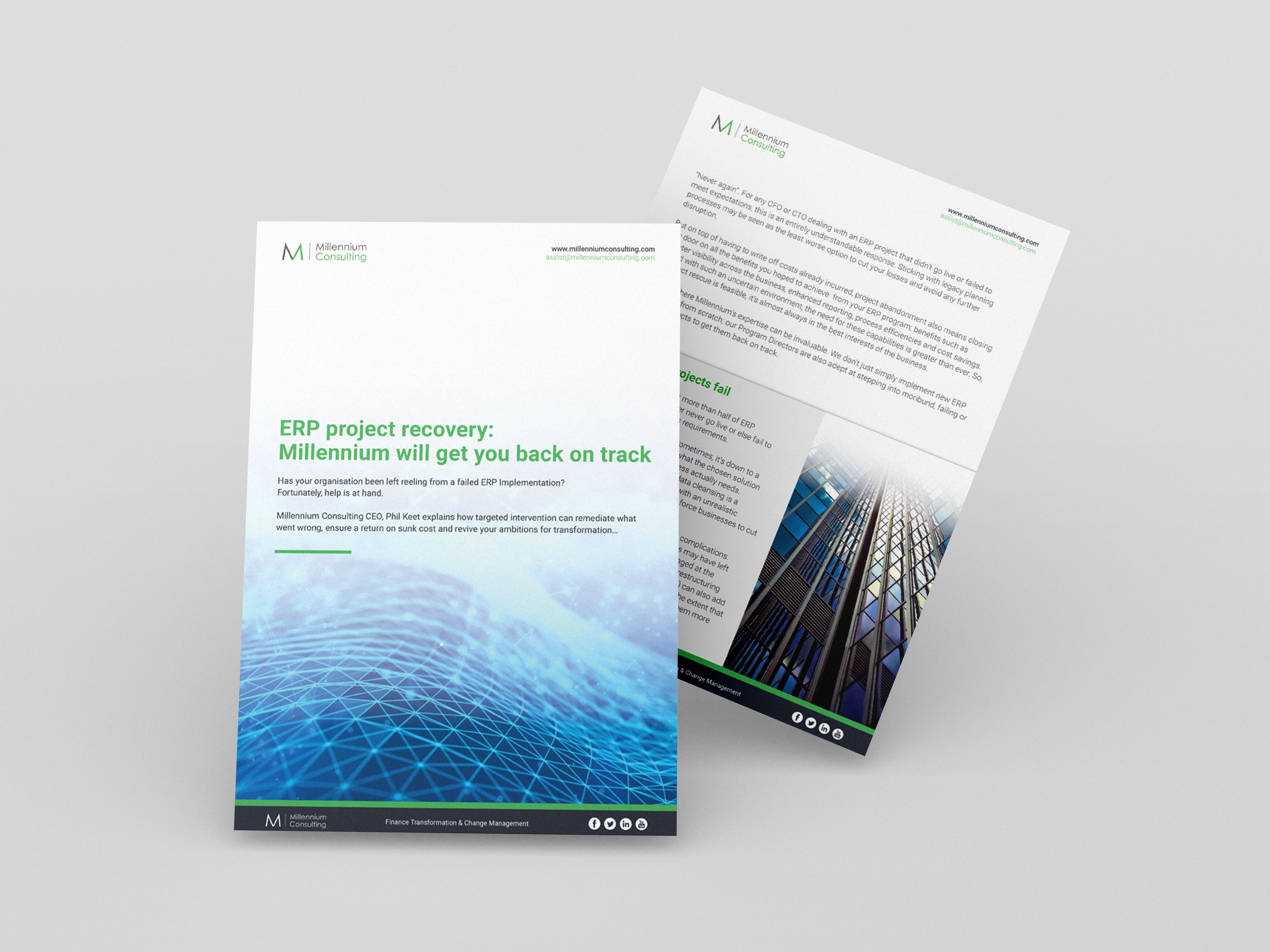
The Future of Cryptocurrency
April 2022
In 2022, some people still regard the world of cryptocurrency as a kind of Financial Wild West: a place where anonymity is the norm, scammers can flourish, and easy wins (or catastrophic losses) can happen overnight.
For others, the arrival of the first digital currency was the most significant fintech development of our generation. Blockchain, the technology that underpins cryptocurrency, is all set to strengthen transparency and financial governance rather than undermining it. And with the number of crypto transactions on the rise, there’s an argument that by ignoring its presence, you are simply handing your competitors an advantage.
The right approach for most UK businesses will probably be somewhere in the middle. Read on to cut through the crypto hype, to understand the up
and coming currencies and trends, and to get a better idea of whether elements of the blockchain/ digital currency landscape may become more relevant to your own business in the near future…
Unit4 Financials 2022 Q1 Release
Unit4 Financials 2022 Q1 Release
The Unit4 Financials continuous release model helps to ensure that finance departments are equipped to handle their most pressing operational challenges.
March 2022
Unit4 Financials 2022 Q1 was made available on 8th March 2022.
The new release contains all the previous Unit4 Financials functionality, new features plus additional customer requested fixes. This release also replaces the temporary solution in place to protect against the Apache Log4j vulnerability identified in December 2021 with a permanent fix.
Highlights of the release include:
Finance:
- Print Invoices – attachment filename
- Copy Company
Billing:
- Use Structured Output in scheduled task for type Billing Issue
Console:
- OpenID configuration restructure
Administration:
- QR Codes on Print Formats
- Print Formatter and Workflow Designer Authentication
- OpenID Connect Authorization Code Flow with PKCE
Procurement:
- Requisitions and Purchase Orders
General Fixes/Updates
- Using a presenter with totals lines on matching from input lost a selected line because the software thought it was a total
- ITK process ending time was being recorded even when a process component failed early on in the process run
- Billing Flexifield dates on entry would always save on a different date if a Browser used a different timezone from the server
- Export to Excel Spreadsheet did not handle divide by zero cells properly
- Assets part disposal depreciation calculated incorrectly when cancel depreciation used
- Assets full disposal calculating depreciation in disposal period incorrectly when cancel depreciation used
- Assets Cost Centre Transfer – when transfer fails, the depreciation lock was incorrectly left in place
- Transformation Parameters XML validation field label was not being translated
- Running Table-Link Helper would left-justify document numbers, so then DTL would fail
- Browse details export did not pass though the URL of hyperlinked user refs to a relevant recipient e.g. Excel
- Bulk Load incorrectly creating log files for unrelated user and company code
The Release Notes detailing the fixes and features within this release can be found in the Documentation area on Unit4’s Community 4U.
Read here to find out when Financials updates are scheduled for 2022, along with important information for legacy V13 and V14 users.
Is it time to upgrade?
Upgrading your finance software can provide new functionality, increased automation and more efficient processes.
5 top functionalities you might not be using in Unit4 Financials
March 2022
Simple improvements to accounting software can often go a long way in saving time and effort for the user. The good news is that through its quarterly update model (Continuous Release), Unit4 Financials is constantly being enhanced to deliver the best possible user experience.
Have some valuable recent software additions passed you by? Here’s our rundown of some of the most noteworthy Unit4 Financials changes and new functionalities you may have missed…
A couple of new features in this area may be of interest. The first, released in 2020 Q1, was the option to change the posting period during the process of the payment run.
A further option is the ability to copy payment information into user references on the original invoice that was posted.
New options in this area make it easier to communicate payment information to customers.
There is now an additional checkbox under the Print Invoices function. When you print or send an invoice via email to a customer account, this allows you to add the PDF invoice to the Financials document.
You now also have the ability to generate an XML format invoice, rather than having to send a PDF.
The Print Invoice function can be set up as either a standalone or scheduled task. These additional enhancements (XML formatting and PDF attachments) can also now be used with scheduled tasks rather than just with standalone tasks.
Previously, your intercompany control account held on your destination and receiver masters could be set up as a matchable account, but not as a customer supply account. This meant if you wanted to generate invoices and send them to that intercompany counter party, you would have to create a separate element (because of the inability to generate any tax or VAT against the counter party when generating the invoice).
This has now changed, so the intercompany control account can also be a customer supplier account. It means you can use the same element against your intercompany control account, as you can against a control account where you were creating invoices etc. for that intercompany counter party.
The benefit is that it reduces the number of elements you need to create as part of your intercompany process.
The last couple of years has seen the introduction of some useful new access control, audit and general security measures.
From Version 14 onwards, you can now allocate users with different capabilities for different companies (for instance, you can assign a user with read only access for company A, but full admin access for company B).
In earlier versions of the solution, you had to log in as a LEVEL8 user or a LEVEL8 sub-user to change passwords and unlock users. In reality, this made it difficult to audit who was making the change. Unit4 has now widened the options for assigning capabilities to users. It makes it possible, for instance, to assign ordinary users with the ability to unlock other users and change those other users’ passwords.
For audit purposes, many organisations require journals to be reviewed by someone other than the document creator before those journals are posted. To facilitate this, Unit4 has introduced an optional control whereby users who are posting documents to the in tray can be prevented from posting the same documents to the books.
This update was designed primarily for cloud, but can be used with on-premise deployments as well. On the output device master, you now have the ability to specify that you want the file or document you are transferring to be transferred via SFTP. This is useful for tasks such as transferring BACS payment files when transacting with suppliers.
This option has also been added into structured output. It means that generated files – whether they are Avalara, XML or any other format – can also be transferred in SFTP.
How to unlock the full value of Unit4 Financials
From best practice advice, system optimisation and configuration through to migration from legacy systems, Millennium Consulting enables organisations to realise maximum return on their Unit4 Financials investment. For expert input from an Elite Unit4 partner, speak to us today.
8 outdated attitudes that are putting your organisation's financial future at risk
March 2022
There’s never been a more important time to plan your organisation’s financial future quickly and accurately. With so much uncertainty around, you need to be able to model the financial implications of what-of scenarios quickly.
But many financial planning and analysis functions are held back by outdated processes, systems and mindsets. They’re still acting in pre-Covid ways and need to rapidly re-invent themselves if they’re to survive the crisis and thrive in the strange new world which lies beyond it.
Here are our finance experts’ summaries of the eight most common mistakes that FP&A functions make and how they can avoid them.
10 Questions on Planning, Budgeting & Forecasting
10 Questions on Planning, Budgeting & Forecasting
March 2022
Insightful questions to help you benchmark your planning, budgeting and forecasting against best practice.
Download this checklist to discover:
- The folly of focusing on software rather than processes.
- How to be sure you can reveal correlations between key business drivers.
- How to use predictive analytics and multiple ‘What if?’ scenarios to ditch the rear-view mirror approach.
- How to support an agile, collaborative and connected finance department.

